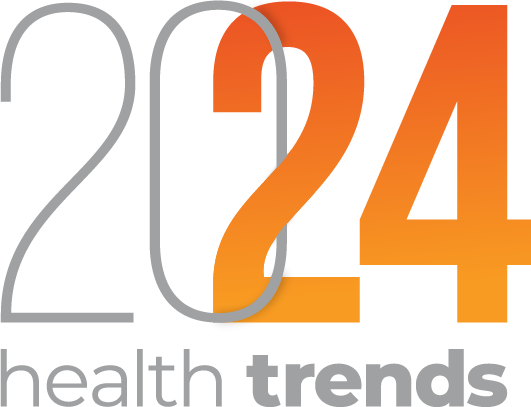Raising the Stakes in the Fight Against Antibiotic Resistance
Drug-resistant infections kill millions of people each year. What would it take to call a halt?
by Gino Girardi, MD

This is part of our ongoing content series from the Syneos Health Trends report.
For researchers and medical teams grappling with antimicrobial resistance (AMR), 2024 got off to an exciting start. Writing in Nature, scientists described a chemically novel antibiotic with an unusual mechanism of action against a deadly pathogen, A. baumannii. The bug thrives in hospital vents and other surfaces, accounts for more than half of deaths in some intensive care units and doesn’t respond to existing antibiotics. Since 2017, the World Health Organization has classed A. baumannii as “priority 1: critical” on the list of pathogens most urgently in need of new drug development.

The early-stage results will take years to translate into patient-ready medicines. But the news of progress against A baumannii still drew headlines around the world—and for good reason. Drug-resistant pathogens caused nearly five million deaths worldwide in 2019, a higher toll than either HIV/AIDS or malaria. In 2019, almost three million Americans were infected with drug-resistant bugs and more than 35,000 died.
Despite AMR’s devastating scope and healthcare impact, worldwide response efforts are failing on at least three fronts:
- Ability to sustain investment in new therapeutics
- Establishing local rules and protocols to optimize usage of today’s treatments, also known as antibiotic stewardship
- Agreeing on global policies to support these new measures
Understanding AMR’s value proposition problem
Antimicrobials, including antibiotics, antifungals and antivirals, may have saved more lives than any other class of medicines. In the late 1960s, however, many academic researchers seem to have concluded that the battle against infectious diseases was largely won and that the era of ‘pestilence’ was over. This sentiment may have suppressed investment, which was further dampened by bleak economics. Simply put, novel antimicrobials cost a lot to develop but earn little in return. Unlike drugs for chronic conditions, antimicrobials are used only in short bursts, and the newer treatments often are held in reserve as options of last resort.
Combing through published research to compare investment thresholds and financial returns on novel antibiotics versus new cancer treatments, researchers in the UK documented a vivid economic mismatch. The estimated median cost to develop a cancer drug in 2017 was about $640 million, producing median revenues of $1.7 billion. In contrast, new antibiotics cost about $1.5 billion but yielded annual, post-approval revenues of just $46 million, on average.
Markets don’t like this picture. Venture capital funding for antimicrobial treatments in the 10 years to 2022 stood at just $1.6 billion, versus $26.5 billion for cancer, according to a 2022 report from the Biotechnology Innovation Organization (BIO).
The discouraging 10-year data are just the latest emblem of a long-running innovation deficit. Since the early 1900s, the US Food and Drug Administration (FDA) has approved only 164 direct-acting new chemical entities (NCE) classed as antibacterials, and only one such product in the last 35 years targeted a novel molecular pathway, according to BIO. Without concerted action, the pattern won’t easily be broken. As of 2022, the total clinical pipeline for new antibacterial therapeutics added up to just 64 unique antibacterial therapeutics. In breadth and novelty, the clinical-stage pipeline for antibacterials “is insufficient to meet the ongoing threat of wide-spread infection from drug-resistant strains,” the BIO authors concluded.
Could a subscription model encourage more AMR development?
Amidst disturbing trendlines, there are reasons for hope. In April 2023, two senators reintroduced the PASTEUR Act in the US Congress. While the bill has had a troubled history, getting it passed would be an important step forward. Under the legislation, the US government would create market incentives by essentially offering up-front payments to cover development of lifesaving drugs that would rarely be used. Over 10 years, or through the duration of patent exclusivity, the government would hand out contracts ranging from $750 million to $3 billion.
The value and eligibility for this subscription model (the “S” in PASTEUR) would be based on specific clinical need and novelty of the experimental drug. The UK took a similar approach in 2022, announcing the first two drugs contracted under a subscription model.
Some observers say it is too soon to declare the UK’s experiment a success. But no one would argue that the PASTEUR Act’s efforts to improve incentives for antimicrobial drug development are misplaced—especially if the new tools and models find resonance with small biotechs that are the industry’s engines of innovation.

Improving stewardship is key
Poorly informed clinical practices are another important piece of the AMR puzzle. In 2018, the CDC and Pew Charitable Trusts teamed up to assess antibiotic use in hospitals and set targets to improve prescribing. Narrowing the focus to vancomycin and fluoroquinolones used for community-acquired pneumonia (CAP) and urinary tract infections (UTIs), they found 79% of all antibiotic prescriptions for CAP were inappropriate, as were 77% of those for UTIs. The panel recommended a national target to reduce inappropriate use for each of the conditions by 90%.
Decreasing numbers of physicians trained in infectious diseases has compounded the stewardship problem. Fewer medical graduates have been entering the field, especially since the COVID-19 pandemic. Of the 335 infectious disease fellowship spots available in US programs last year, 117 were not filled.
Rising costs of medical education lure students into more high-paying specialties so that loans accumulated during undergraduate and medical schools can be repaid faster. (The average cost of a four-year medical education in the US ranges from $155,000 to close to $400,000). The lack of trainees in infectious diseases means fewer researchers, public health advocates and champions for public policy initiatives.
Efforts to encourage Congress to invest in this workforce are underway from various organizations, including the Infectious Diseases Society of America (IDSA). But each passing year brings new reminders that we must act quickly. To cite just one possible harbinger: in March 2023 the CDC warned about rising cases of Candida auris, a fungal infection posing a particular threat to hospitalized elderly and immune-compromised individuals. Unknown in the US before 2016, C. auris was reported for the first time in 17 states between 2019 and 2021. Screening for the fungus turned up more than 4,000 cases that year, a three-fold increase from 2020.
AMR is a serious threat that continues to undermine many advances in medicine. The need for public/private partnerships, government-backed economic incentives and more trained individuals to work in infectious diseases has never been more acute.
We can help
Syneos Health has worked on numerous studies involving use of novel antimicrobials to treat resistant pathogens. This work has resulted in the approval of antibiotics for the treatment of ventilator and hospital-acquired pneumonia due to microorganisms known to be resistant to conventional treatment. In addition, our experts have developed adjunctive treatments such as antibody and bacteriophage therapy used in combination with antibiotics to treat life-threatening infections. Syneos Health continues to be committed to working in this area to provide needed medications in the battle against AMR.
Contributors
Gino Girardi, MD
Senior Vice-President, Scientific and Medical Management
General Medicine and Infectious Diseases
